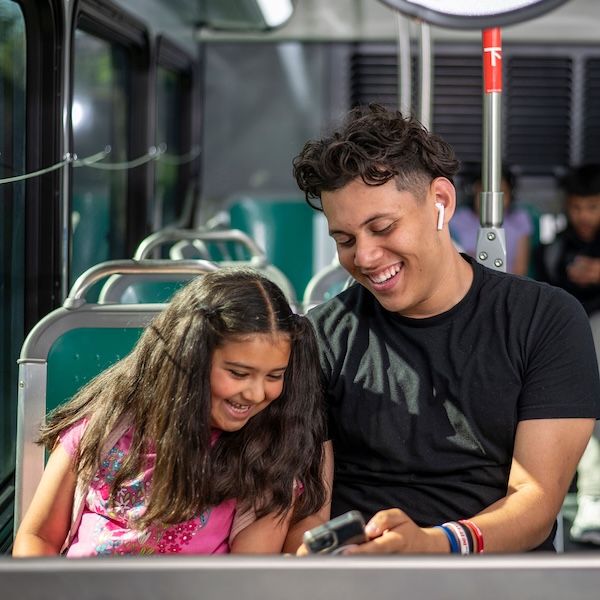Student Transit Pass Program
Program Overview
Eligible middle and high school students in Alameda County can receive a free Student Transit Pass, offering:
- Unlimited free rides on AC Transit, Union City Transit, or Wheels
- 50% off BART fares
- Discounts on other Bay Area transit systems
Use the pass to get to school, work, or anywhere you want to go, whether that’s during the school year or while you’re on summer break! And don’t worry about it expiring—the pass remains valid until you leave high school.
How It Works
- Check if you’re eligible and apply for a pass.
- Once your application is approved, a Youth Clipper card with the Student Transit Pass loaded on it will be mailed to your school. You can pick it up from your school’s site administrator. Note: This will take 4-6 weeks or more, especially at the beginning of the school year. (If you already have a Youth Clipper card, the pass will be loaded directly onto it within 2-4 weeks.)
- When you receive your Student Transit Pass, call Clipper at (877) 878-8883 (TDD/TTY: 711 or (800) 735-2929) to register your Youth Clipper card and set up your online account. Note: calling is the only way to register a card ordered through the Student Transit Pass program.
- Start riding! Check out these tips to use your pass.
- If you have questions about the Student Transit Pass, ask your school’s site administrator, review our FAQs, or contact us.

Find Routes Near You
Use our interactive map to find participating schools, bus routes, BART routes, and BART stations.
Note: Your Student Transit Pass only provides free trips on your local bus routes—not BART, Transbay routes, or routes provided by other transit agencies (i.e. students at AC Transit-served schools do not get free rides on Wheels, and vice versa).


